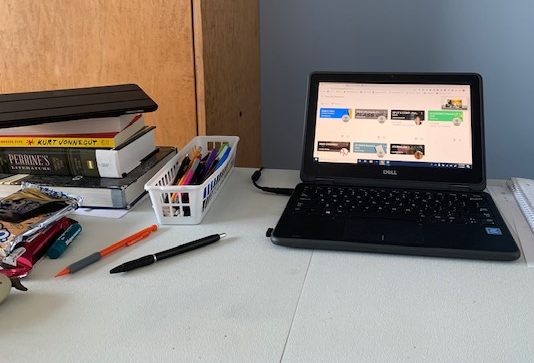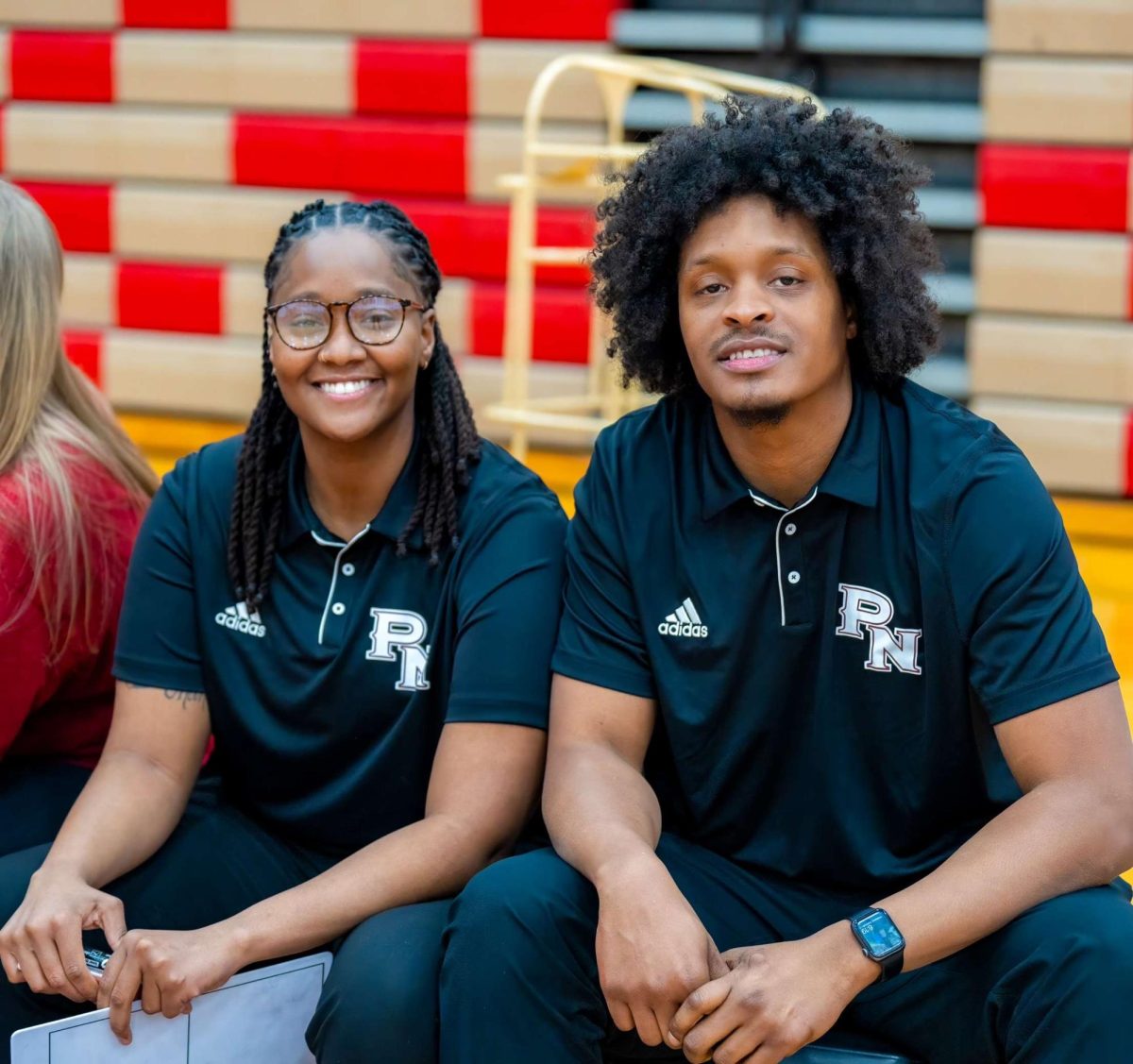Students feel online learning stress

Students have to create their own study spaces during remote learning
January 19, 2021
Ten months ago, the education metrics changed for American students. School districts are now tasked with the challenge of providing their students with an education and keeping them safe.
This transition to the online format has impacted the students in a myriad of ways.
“From struggling to wake up to struggling to stay awake for all the classes, it is a challenge,” senior Billy Krankavitch said. “Roll out of bed, join class, watch the teacher talk about a subject that doesn’t interest you, repeat. It’s even harder when you factor in work, which is plentiful, to say the least.”
During a normal school year, social workers and counselors are available, but with the introduction of online learning, accessibility has been complicated.
“I think some students are finding it more challenging and isolating, [because] they miss the social aspect of school, interacting with their friends, teachers, sports, clubs and just having the normalcy of routines,” North social worker Kassi Foleno said. “I think overall, across the board, I see a lot of students finding it hard to stay motivated and organized working from home.”
Some major struggles faced by students during this period include increased workload, feelings of isolation, loneliness and the struggle to find motivation.
“Since starting the online learning period, my mental health has definitely worsened,” North senior Scott Smith said. * “Although, it would be far worse if I didn’t have people in my life to distract me from it.”
After the spring semester, where classwork completion was more fluid, this semester, students are struggling with finding the motivation to complete the work.
“One of the things I miss the most from in-person learning is the mandatory nature of it,” Smith said. “Online learning feels mostly optional. I don’t have to show up, I don’t have to do the work, so I find myself choosing the easy path sometimes. Even if it’s to my own detriment.”
Relationships between the student and the teacher are an integral part of in-person learning, and with the new format, those relationships are harder to foster. Some students are struggling without them.
“With online learning, we aren’t really able to build a strong bond or connection with our teachers,” North senior Wallace Williams said.*“Because of this, I am always uncomfortable asking any questions.”
The teacher-student relationship isn’t the only one struggling to form during this period. The relationship between students is suffering as well. For freshmen or students who are new to the school, it is especially difficult to connect with their fellow students over the computer.
“For freshmen to form new friendships is certainly more challenging during remote learning,” North psychologist Diana Klemetson said. Additionally, “The hands-on projects, experiments and face-to-face discussions that spice up the learning process can’t be delivered the same way during remote learning which can negatively impact students’ motivation.”
Another group affected by the switch is students with accommodations. Whether it’s an IEP or a 504 plan, students with challenges are finding it difficult to discover what works for them in the virtual space.
“I have accommodations for extended time on assignments and tests,” Williams said. “It is really difficult for me, a person with diagnosed social anxiety, to approach a teacher about getting extended time on assignments.”
According to Klemetson, “Our social workers and counselors report that the number of families who seek referrals to outside mental health providers has increased.”
At a time when mental health services are needed, North Student Services has found ways to try and provide via computer similar services to those typically offered in person. Every week, students are given slide shows for “Social-Emotional Learning” (SEL) focusing on self-betterment and inward reflection.
“In addition to the SEL content you see weekly, social workers and counselors are available to students during remote via email, Skype or zoom appointments,” Foleno said. “Your support staff want to hear from you. Don’t be afraid to reach out just to check in or chat. We miss seeing students each day in person.”
For some students, mental health services in school were an important tool they could use to get through the week, and with the new format, it’s not giving the same escape to students who may have relied on it in person.
“I miss being able to go to student services to talk to my counselor or social worker,” Williams said. “I find myself getting overwhelmed a lot during online learning and needing to step away for 5-10 minutes. Unfortunately, I’m not able to take those short breaks without getting attendance or participation points taken away.”
Feeling overwhelmed by increased workloads and less easily accessible help during online learning is adding to student stress.
“I think the workload is far too much,” Smith said. “Especially taking into consideration that as students, we have six academic classes that have assignments due almost every day. It’s a lot to keep up with and I think it could use work.”
This period of online learning is going to have lasting effects on students, both academically and socially. While a lot of these effects may seem negative, there might be some unexpected benefits.
“I think students will be more resilient, better problem solvers and stronger independent learners as a consequence of remote learning,” Klemetson said. “After the pandemic is under control and normal life can resume, teachers will work hard with students to eliminate any academic gap that may have been generated. Students may not even realize yet how much stronger they are becoming even if they experience temporary struggles.”
*Students quoted in the piece wished to remain anonymous.






